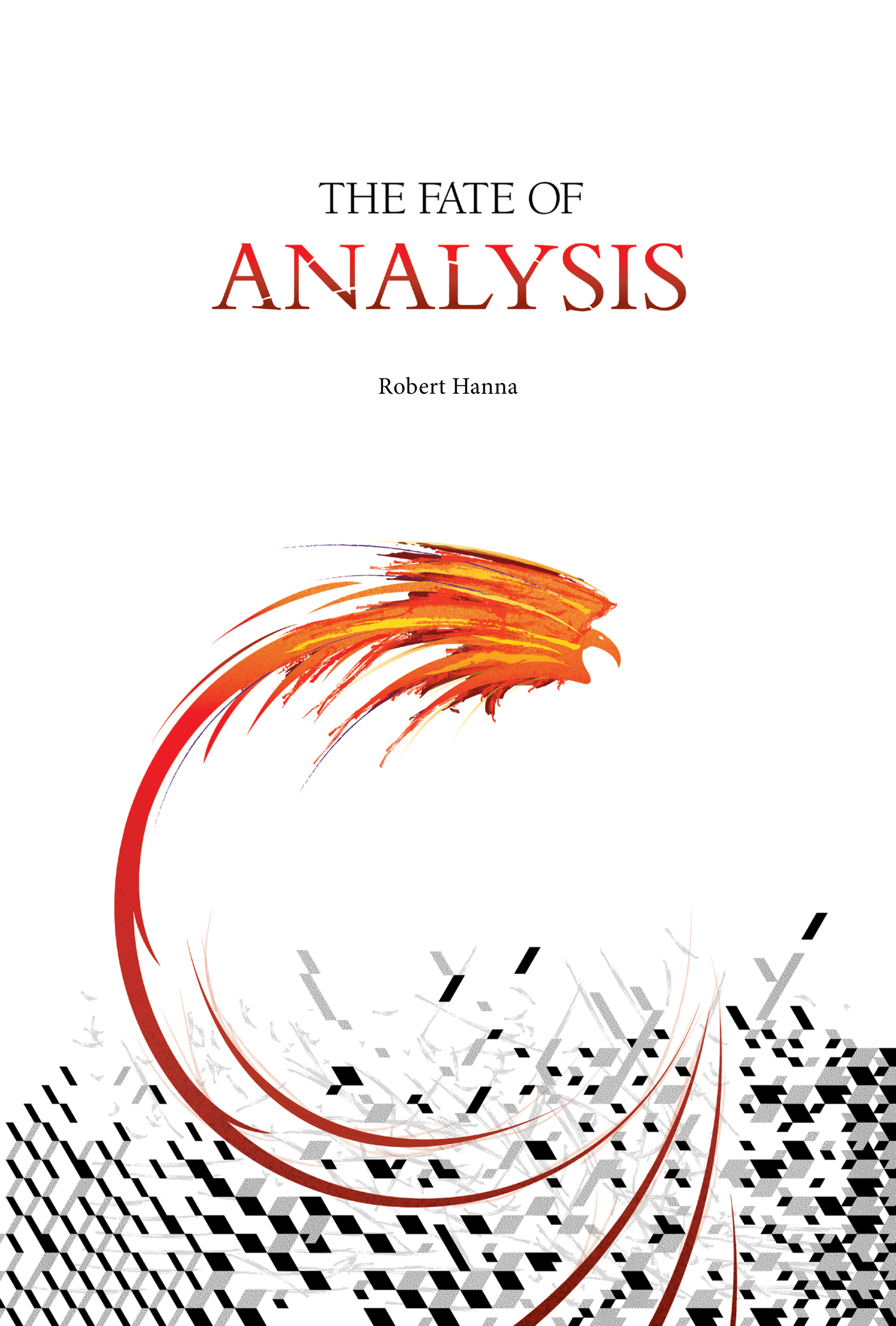INTENTIONAL ACTION: things that human or non-human animal subjects with capacities for consciousness, emotion (i.e., feeling, desire, and passion), intentionality (i.e., mental directedness to targets of all kinds, whether concrete or abstract, or objective or subjective), self-conscousness or self-reflection (i.e., propositionally-based, higher-order reflexive awarenness), and rationality do, or perform, and that do not merely happen to them (Harry Frankfurt).
Controversy: Many philosophers, scientists, and other non-philosopher-non-scientist people believe that all human animals, and all other kinds of animals, are incapable of carrying out real intentional action, and more specifically are incapable of real free will and practical agency, aka free agency, because they’re really deterministic or indeterministic automata, i.e., natural machines, or less technically, to quote the comic strip Dilbert, “moist robots.”
Defenders of this hard-headed view are called hard determinists, hard incompatibilists, or (to use my own terminology) hard natural mechanists.
In addition to that hard-headed crew, there’s another semi-hard-headed crew of people who believe that even though (i) all human animals are really deterministic or indeterministic automata, nevertheless (ii) there is also some other sense in which at least some human animals can be intelligibly and justifiably believed to be capable of carrying out intentional action and more specifically capable of free will + practical agency, aka free agency.
Defenders of this semi-hard-headed view are called soft determinists, compatibilists, or (to use my own terminology) soft natural mechanists.
The hard-headed view and the semi-hard-headed view are the mainstream views in contemporary professional academic philosophy, contemporary professional academic science, the professional academy more generally, and among the contemporary non-philosopher, non-scientist, non-professional-academic public that reads, for example, The New York Times, The Washington Post, The Wall Street Journal, The Guardian, The London Times, The Economist, Science, and/or Scientific American—and no doubt, also among those who read Le Monde, Le Figaro, Die Zeit, Frankfurter Allgemeiner Zeitung, and so-on.
In sharp contrast to the proponents of the hard-headed view or the semi-hard-headed view about intentional action and free will + practical agency aka free agency, there are other philosophers, other scientists, and other non-philosophers or non-scientists who believe (i) that the hard-headed view and the semi-harded view, alike, are false, (ii) that all human animals and other animals are not deterministic or indeterministic automata, machines, or “moist robots,” and (iii) that all human animals and other animals that possess capacities for consciousness and rationality are fully capable of real intentional action, real free will, real practical agency, and therefore real free agency.
Defenders of this contrarian view are called metaphysical libertarians—not to be confused, however, with political libertarians in the specifically contemporary North American sense, who are horses of an altogether different color, even if some of them are also, as it so happens, metaphysical libertarians.
For the record and for better or worse, I defend a version of metaphysical libertarianism called Natural Libertarianism,[1] but also vigorously reject political libertarianism.[2]
See also the entry on “free agency.”
ELABORATION
Here’s an example of basic intentional action, expressing real human free agency, together with a detailed description of how it unfolds.
Let’s consider the not-so-very-strange case of Elizabeth, a creature with a conscious, intentional mind-like-ours, a female rational human animal, under ceteris paribus conditions.
Elizabeth’s conscious, intentional mind-like-ours is essentially embodied, and thereby it is necessarily and completely neurobiologically embodied, right out to the skin.
She is fully alive and fully awake.
Her consciousness-like-ours is primarily manifest as desire-based emotion.
Her fundamental mental properties are fused with her fundamental physical properties and she is a non-equilibrium, non-linear, self-organizing thermodynamic system.
Her mind is the set of dynamically emergent truly global or inherently dominating intrinsic structural properties of her living organismic animal body, which, together with her fundamental physical properties, hylomorphically jointly constitutes her.
Since all dynamic systems engage in circular causality, and thereby have both structuring causation and efficient causation, it follows that her mind is the dynamically emergent structuring cause of whatever is efficiently materially caused by her living animal body.
At time t1 Elizabeth sees a half-filled glass (of milk, of course) in front of her and forms the self-conscious deliberative intention to pick it up and drink from it.
This is the goal focus of her current affective frame.
The act of picking up the glass and drinking from it would then be a complex non-basic intentional act carried out by means of a certain arm movement, which would in turn constitute a single basic intentional act.
Elizabeth is also ear-plugged into her smart phone and listening to classic hip-hop (more specifically, ‘‘Throw Ya Hands in the Air,’’ downloaded from the most excellent classic 1996 CD ATLiens, by OutKast).[3]
At time t2, slightly later than time t1, Elizabeth suddenly has a pre-reflectively conscious effective first-order desire to throw her right arm above her head, and thereby begins effortlessly trying to throw her right arm in the air.
She forms no self-conscious or self-reflective deliberative intention to raise her arm, and indeed has no instrumental reason for raising her arm.
But she feels good.
In response to the music she is listening to, she simply suddenly effectively desires to raise her arm, and the goal focus of her current affective frame correspondingly shifts from picking up her glass to throwing her arm in the air.
If the act successfully comes off, it will be a pre-reflective or spontaneous, impulsive self-expressive intentional act.
At the same time, her brain and other vital systems are in a certain complex dynamic neurobiological state.
Because Elizabeth’s fundamental physical properties are in a relation of mental-physical property fusion with her fundamental mental properties, and because she is a self-organizing thermodynamic system, her neurobiological state mirrors her conscious intentional state, and therefore her neurobiological processes are in an unstable dynamic transition between instantiating a causal power to produce a reaching and grasping movement, and instantiating a causal power to produce an impulsive self-expressive arm-raising movement.
In the jargon of Dynamic Systems Theory, this unstable dynamic transition is called a ‘‘bifurcation.’’
At time t3, which is later than time t2 by at the very least 550 milliseconds, Elizabeth’s effortless trying begins to actively guide her overt body movements.
This effortless trying has already been synchronous and efficaciously causally engaged with various covert neurobiological processes in her vital organs and vital systems, including of course her brain, for at least 550 milliseconds.
But by now the dynamic instability has been stabilized: the dynamic bifurcation has happened, and Elizabeth’s neurobiological and behavioral processes alike have now entered a new complex dynamic regime with a new global dynamic pattern.
She actively guides these processes just by continuing to instantiate the fundamental mental property of effortlessly trying to raise her arm and by keeping this goal within the cross-hairs (as it were) of her affective frame.
The affective frame of her pre-reflectively conscious desire-based emotive intention to raise her arm guarantees that her conscious state is as hyper-finegrained as her goal focus, and as a consequence, the property of effortlessly trying to throw her arm in the air is just as richly structured as it needs to be in order to provide a structuring cause of her arm movement.
At time t4, which is later than t3 by at the very least 350–400 milliseconds, Elizabeth’s arm is in motion and going up as a necessary result of her effortless trying and active guiding, together with the neurobiological processes whose dynamic patterns she has efficaciously molded to the requisite level of hyper-finegrainedness conforming to her goal focus on throwing her arm in the air, by instantiating that very mental property.
As we have seen, she has been synchronously controlling the efficient material causation of her motile, situated, forward flowing suitably neurobiologically complex living organismic body, so that her effortless trying has been the structuring cause of both her covert and overt intentional body movements, since t3.
But although she is now, at t4, still trying to throw her arm in the air and still affectively framing her practical goal, and still controlling her cover and overt intentional body movements by inherently dominating and thereby molding the dynamic patterns of her neurobiological processes into a certain hyper-finegrained truly global or inherently dominating dissipative structure, her synchronous guidance at this moment is monitoring rather than active.
Thus she is pre-reflectively relatively mentally relaxed as her arm moves quickly, smoothly, and gracefully towards its intended position above her head.
It is also possible now for Elizabeth to become self-consciously or self-reflectively aware that she has formed the intention to throw her arm in the air rather than the intention to reach for and pick up the glass.
Finally at time t5, which is slightly later than t4, Elizabeth’s arm glides into its intended position above her head, which then becomes an overtly motionless body orientation with her arm poised for its next movement, and she stops trying to throw it in the air.
Her pre-reflectively conscious desire-based emotive intentions and her neurobiological processes then begin to enter another dynamic bifurcation—perhaps towards the causal power to produce a waving movement as if she just doesn’t care.
In any case, and in precisely the way we have described, Elizabeth’s arm has gone up in a characteristically Elizabeth-like way, and the pre-reflective or spontaneous, impulsive self-expressive intentional act of raising her arm is successfully complete.[4]
See, e.g., R. Hanna, and M. Maiese, Embodied Minds in Action (Oxford: Oxford Univ. Press, 2009); and R. Hanna, Deep Freedom and Real Person: A Study in Metaphysics (THE RATIONAL HUMAN CONDITION, Vol. 2) (New York: Nova Science, 2018). ↩︎
See, e.g., R. Hanna, Kant, Agnosticism, and Anarchism: A Theological-Political Treatise (THE RATIONAL HUMAN CONDITION, Vol. 4) (New York: Nova Science, 2018). ↩︎
Available online at URL = https://youtu.be/9JeEIH7fpAQ. ↩︎
See also R. Hanna, and M. Maiese, Embodied Minds in Action (Oxford: Oxford Univ. Press, 2009), esp. chs. 3-5 and 8; and R. Hanna, “Will-Power: Essentially Embodied Agentive Phenomenology, By Way of O’Shaughnessy,” in C. Erhard and T. Keiling (eds.), Routledge Handbook: The Phenomenology of Agency (London: Routledge, 2020), pp. 312-333. ↩︎

If you feel so inclined, please feel free to show your support for Robert via his Patron page (https://www.patreon.com/philosophywithoutborders) or purchase his recently published book, The Fate of Analysis (2021).

The Fate of Analysis (2021)
Robert Hanna’s twelfth book, The Fate of Analysis, is a comprehensive revisionist study of Analytic philosophy from the early 1880s to the present, with special attention paid to Wittgenstein’s work and the parallels and overlaps between the Analytic and Phenomenological traditions.
By means of a synoptic overview of European and Anglo-American philosophy since the 1880s—including accessible, clear, and critical descriptions of the works and influence of, among others, Gottlob Frege, G.E. Moore, Bertrand Russell, Alexius Meinong, Franz Brentano, Edmund Husserl, The Vienna Circle, W.V.O. Quine, Saul Kripke, Wilfrid Sellars, John McDowell, and Robert Brandom, and, particularly, Ludwig Wittgenstein—The Fate of Analysis critically examines and evaluates modern philosophy over the last 140 years.
In addition to its critical analyses of the Analytic tradition and of professional academic philosophy more generally, The Fate of Analysis also presents a thought-provoking, forward-looking, and positive picture of the philosophy of the future from a radical Kantian point of view.







